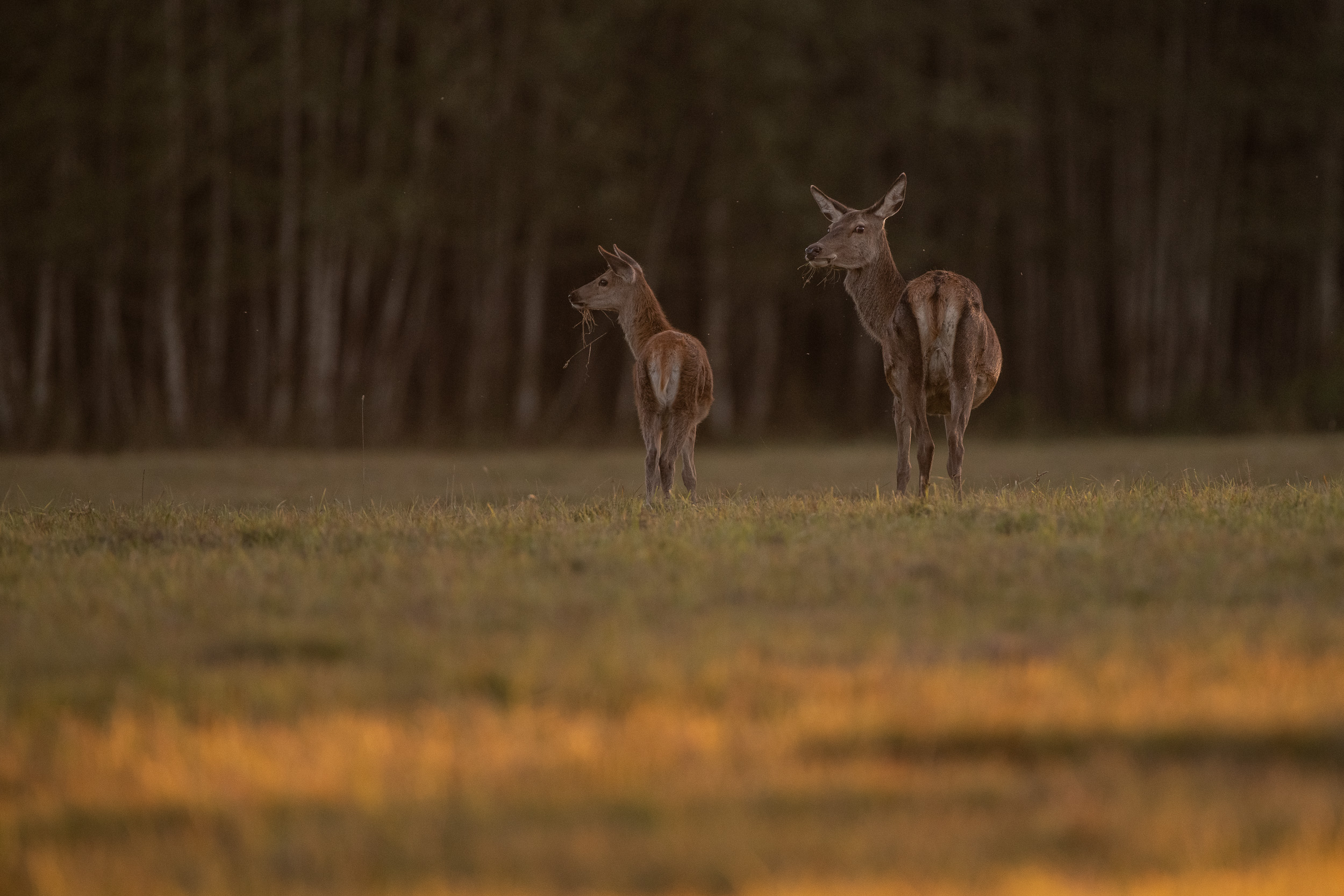
Red deer
RED DEER (Cervus elaphus) are the main inhabitants of Toosikannu Wildlife Park
Overall
Red deer isn’t very well spread in nature of Estonia, but population is growing. Red deer (Cervus elaphus) is a species of deer native to Europe, but also found in Asia and North America. They are the largest deer species in Europe and can grow up to 1.5 meters tall and weigh up to 300 kg. Red deer have a distinctive reddish-brown coat with a lighter underside, and males have large antlers that they use for mating displays and territorial battles. They are herbivores, primarily eating grasses, leaves, and bark, and are most active at dawn and dusk. Red deer are social animals, living in herds led by a dominant male. They have been hunted for their meat, hides, and antlers for thousands of years, and today are often farmed for these purposes.
Appearance of red deer
The red deer is a royal animal in appearance, characterized by their reddish-brown coats and large antlers. The coat color varies from light brown in summer to a dark reddish-brown in winter. They have a lighter colored undersides and the males have a mane of longer hair on their neck. Males (stags) also have large, branching antlers that they use in mating displays and territorial battles. Antlers can grow up to 1 meter in length and are shed and regrown annually. Red deer have long, slender legs and a muscular body, which helps them to run at high speeds and navigate difficult terrain. They also have a distinctive “bell” of longer hair on the throat that they use to make vocalizations. Overall, red deer have a unique and easily recognizable appearance that sets them apart from other deer species.
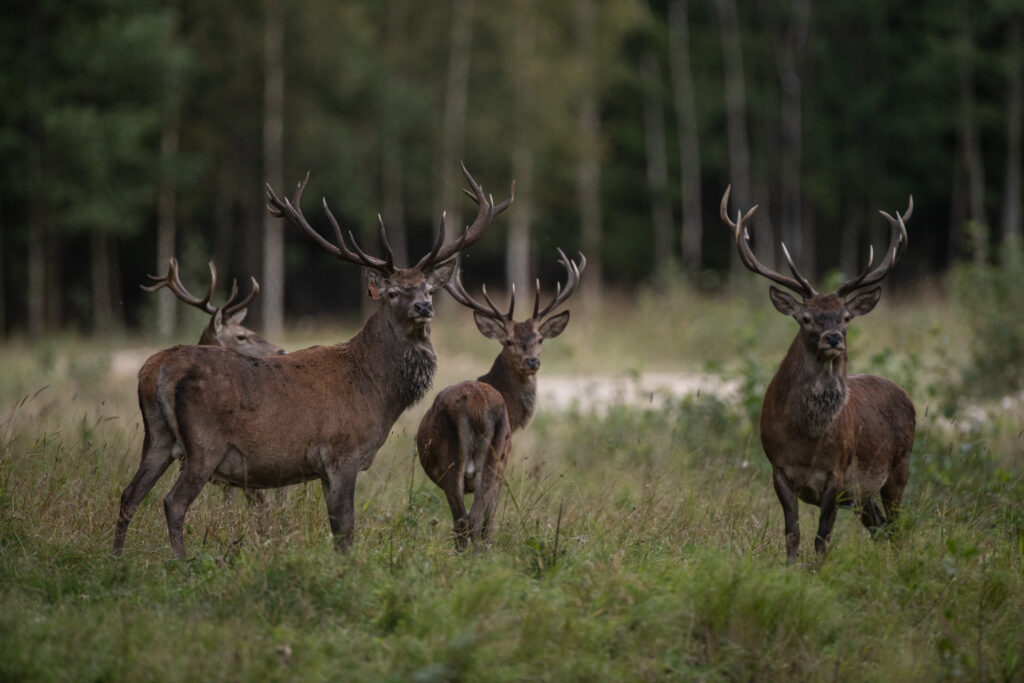
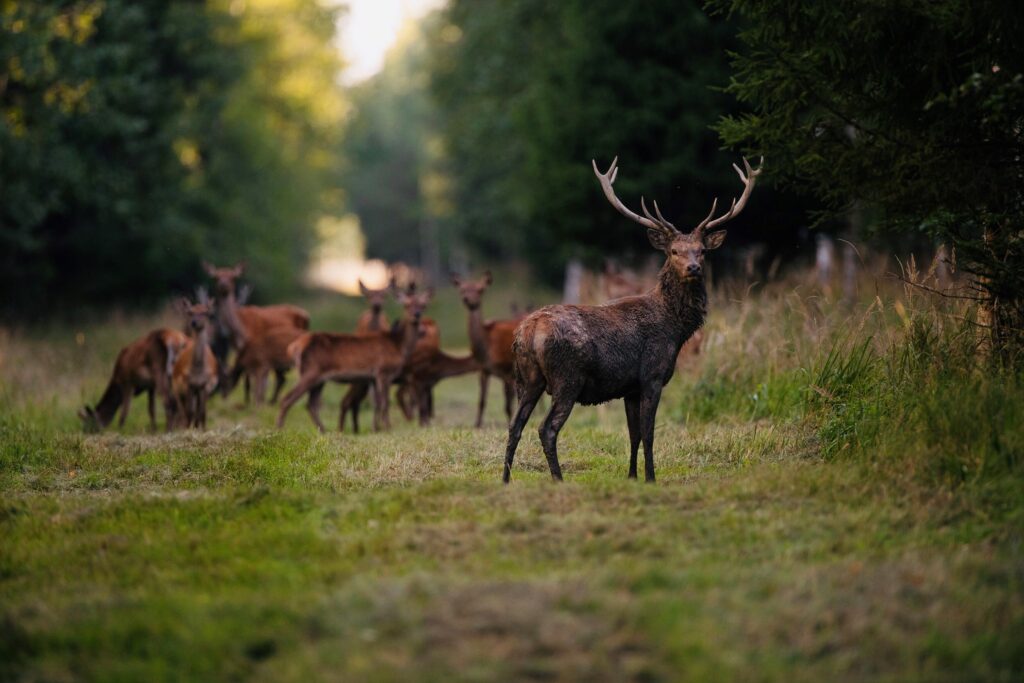
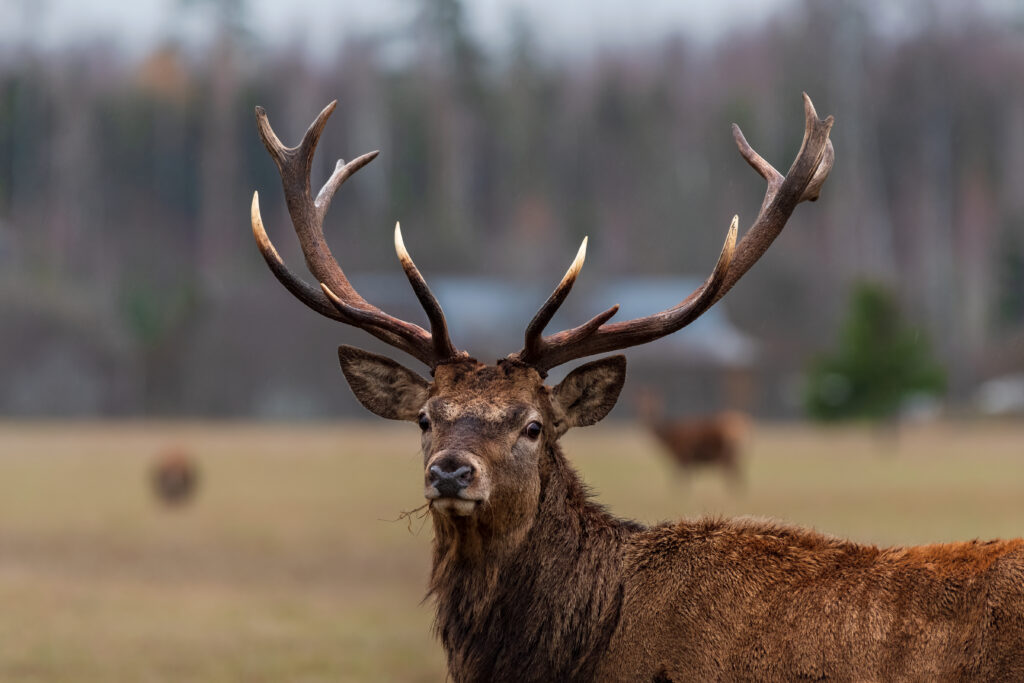
It’s size is intermediate between a roe deer and a moose, and its body size shows sexual dimorphism. Bulls weigh 160-200 kg, rarely up to 300, cows a hundred kilos. Body length (trunk length) is up to 230 cm, shoulder height 120-150 cm. The male animal is adorned with horns, which are mostly shed in March. The first horns begin to grow only at the beginning of the second year of life, and they are peeled from the skin in August-September. Finished horns usually weigh 2-5, very rarely up to 10 kg. Normally, an adult bull has 7-8 prongs on one horn. Life span reaches up to 20 years, age is determined by tooth wear. The appearance of a stag bull changes quite significantly during its life. The size of the mark of a male animal is 11×8 cm, smaller in females and young ones.
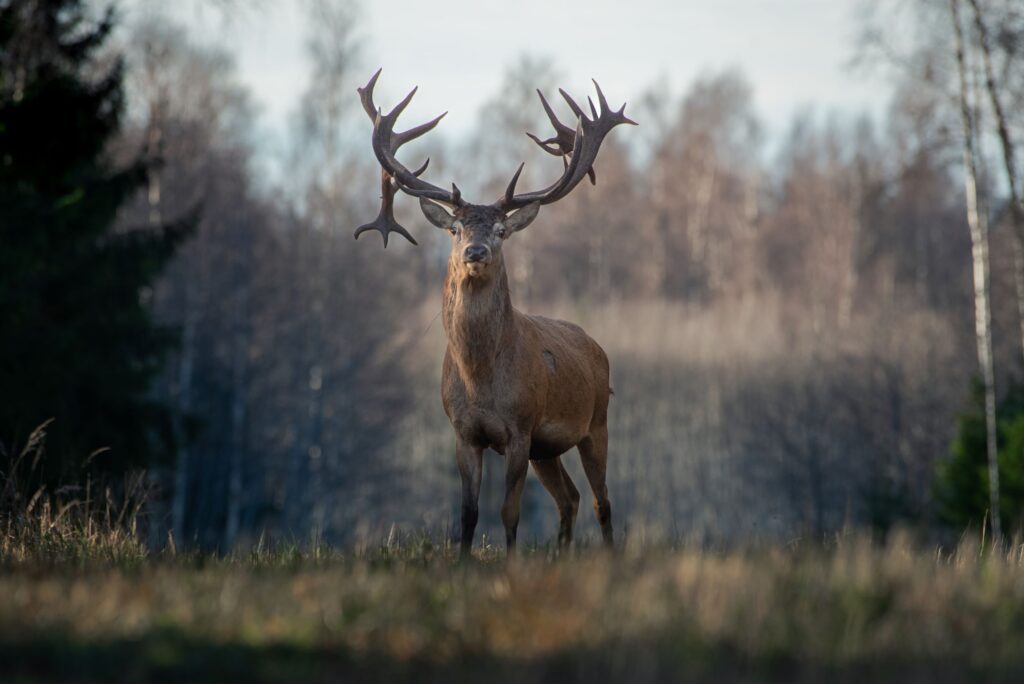
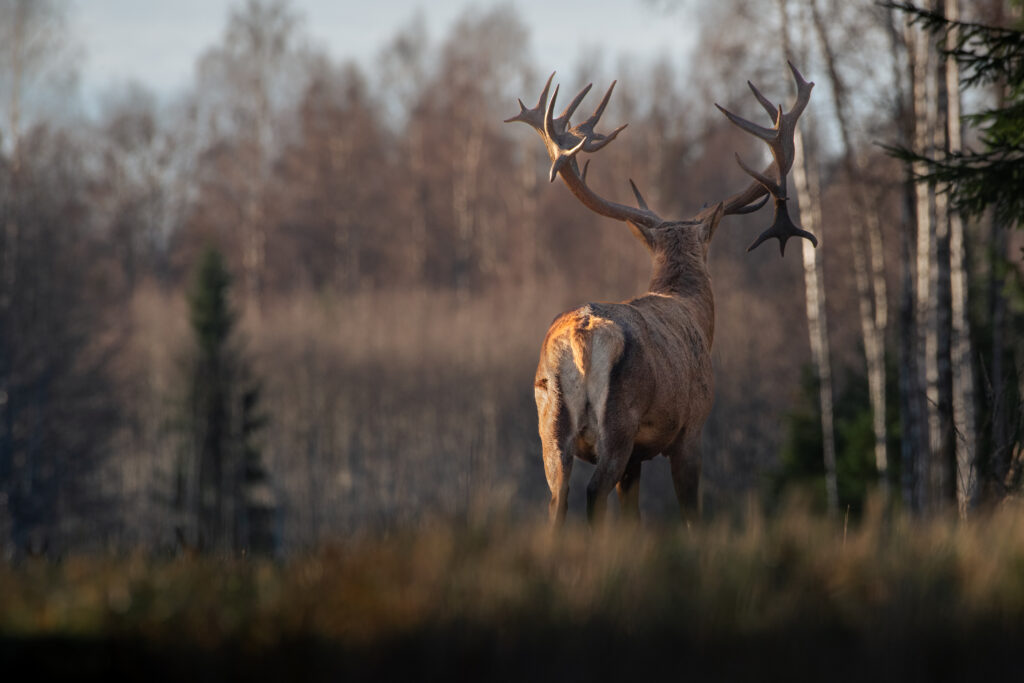
Who is Hubert?
Hubert is our “deer king”, who is distinguished from other bulls by his extraordinary crown of horns, where one branch grows downwards. It is not an injury, such horns grow on him every year and more and more magnificent.
Hubert was named in honor of St. Hubertus, who was one of the most beloved saints in the Middle Ages and has been revered ever since as the patron saint of hunters. The legend of St. Hubertus lives on to this day, read more HERE.
Red deer breeding and rut
Red deer breeding, also known as the rut, occurs annually in september and october. During the rut, male red deer(buck) engage in aggressive displays and compete for access to females. The males use their antlers, vocalizations(see video link below or HERE), and physical strength to establish dominance over other males and attract females. The dominant male will then mate with several females in his herd.
Females (doe) typically give birth to one or two offspring (calves) in the spring, after a gestation period of about 240 days. The calves are born with spotted coats and are able to stand and nurse within hours of birth. They are dependent on their mothers for food and protection for the first several months of life.
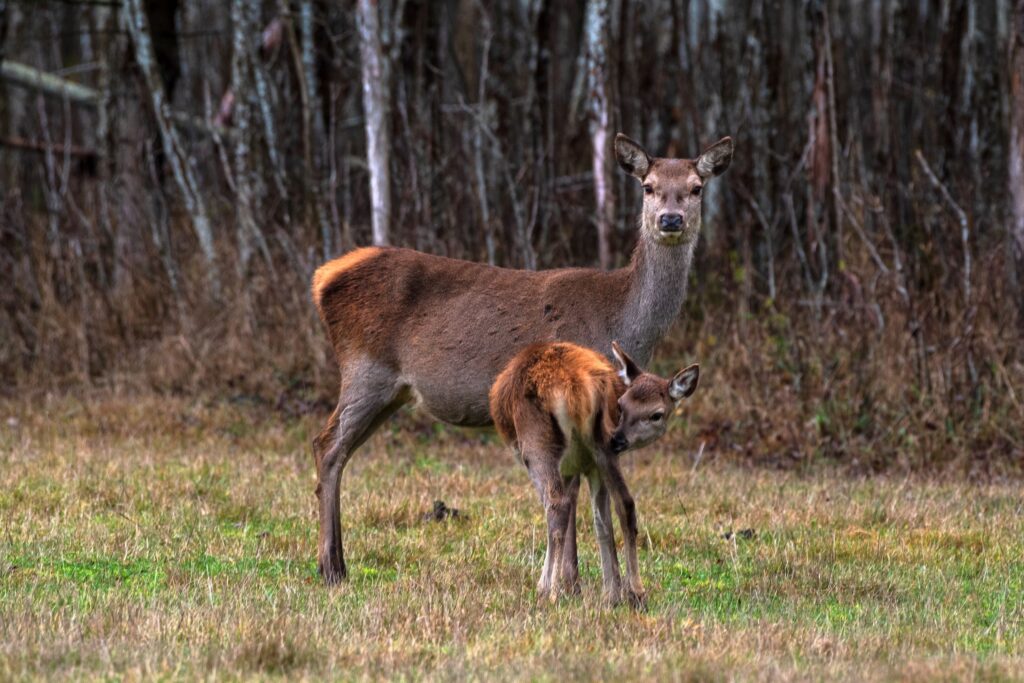
Red deer have a strong social structure, with herds led by a dominant male and composed of females and their offspring. The males will leave the herd and form bachelor groups after the rut, while the females and their offspring remain in the herd. This social structure allows red deer to cooperate in protecting their young and finding food, and helps to ensure the survival of the species.
Smaller rustling also occurs outside of rut time, this characteristic clatter can also be heard in the stillness of the evening when the herd is within sight.
Nutrition of red deer
Red deer are herbivores, primarily feeding on grasses, leaves, and bark. They have a flexible diet that allows them to adapt to different habitats and seasons. In the summer, they feed on fresh grasses and foliage, while in the winter they rely more on woody plants and lichens.
Red deer have a four-chambered stomach, which allows them to ferment and extract nutrients from tough plant material. They also have strong teeth and jaws, which they use to grind and crush their food. They are able to extract the maximum amount of nutrients from their food, which allows them to thrive in a variety of habitats and conditions.
Red deer of all ages love spruce bark. Aspen, mountain ash, ash taste good, alder is also tried. At the same time, after a certain age, nobody wants birch. This means that when managing the forest in Toosikannu, the presence of animals must be taken into account more than in a normal forest.
This is done by cultivating fields and grasslands in one set. A dozen former farms remain in the area of the Toosikannu Wildlife Park, where the fields (in the fourth also the outdoor areas) are kept in order. When sowing, the selection of crops is based on the fact that ungulates would like to eat them – in this way, it is possible to attract animals from the forest to the field.
Clover and so-called pasture mixture are grown on the fields. In addition, the embankments created by land reclamation behind the ditches have been cleaned and smoothed (proper land reclamation has been carried out on the relatively low lands of Toosikannu), from which an additional area for feeding places has been obtained. A total of 7 hectares, which has also been sown with a pasture mixture.

